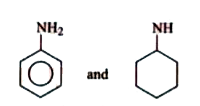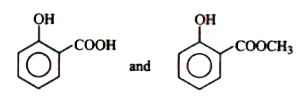Chondrichthyes can be differentiated from osteichthydes externally by
Naked gills
Heterocercal tail
Ventral mouth
All the above
The correct Answer is:D
To differentiate Chondrichthyes from Osteichthyes externally, we can follow these steps:
1. Gills Structure:
- Chondrichthyes (cartilaginous fish) have exposed gills that are not covered by an operculum (a bony flap). This means their gill slits are visible on the sides of their bodies.
- In contrast, Osteichthyes (bony fish) have gills that are covered by an operculum, which provides protection and aids in respiration.
2. Mouth Position:
- The mouth of Chondrichthyes is located on the ventral (underside) part of their body. This positioning is typical for many species within this group.
- Osteichthyes, on the other hand, generally have a terminal mouth, which is located at the front of their heads.
3. Tail Structure:
- Chondrichthyes possess a heterocercal tail, which means that the tail has two lobes that are asymmetrical in shape. This tail structure helps in providing lift and thrust.
- Osteichthyes typically have a homocercal tail, where the tail fin is symmetrical and consists of two lobes of equal size.
4. Conclusion:
- Based on these differences in gill structure, mouth position, and tail shape, we can conclude that Chondrichthyes can be differentiated from Osteichthyes externally by all of the mentioned characteristics.
Final Answer:
All of the above (naked gills, heterocercal tail, ventral mouth).
---
- Chondrichthyes (cartilaginous fish) have exposed gills that are not covered by an operculum (a bony flap). This means their gill slits are visible on the sides of their bodies.
- In contrast, Osteichthyes (bony fish) have gills that are covered by an operculum, which provides protection and aids in respiration.
- The mouth of Chondrichthyes is located on the ventral (underside) part of their body. This positioning is typical for many species within this group.
- Osteichthyes, on the other hand, generally have a terminal mouth, which is located at the front of their heads.
- Chondrichthyes possess a heterocercal tail, which means that the tail has two lobes that are asymmetrical in shape. This tail structure helps in providing lift and thrust.
- Osteichthyes typically have a homocercal tail, where the tail fin is symmetrical and consists of two lobes of equal size.
- Based on these differences in gill structure, mouth position, and tail shape, we can conclude that Chondrichthyes can be differentiated from Osteichthyes externally by all of the mentioned characteristics.
All of the above (naked gills, heterocercal tail, ventral mouth).
Topper's Solved these Questions
- BOOK - DINESH PUBLICATION ENGLISHCHAPTER - VERTEBRATA-AGNATHA AND PISCESEXERCISE - Revision Questions126videos
VERTEBRATA-AGNATHA AND PISCES
- BOOK - DINESH PUBLICATION ENGLISHCHAPTER - VERTEBRATA-AGNATHA AND PISCESEXERCISE - Check Your Grasp12videos
VERTEBRATA-AGNATHA AND PISCES
- BOOK - DINESH PUBLICATION ENGLISHCHAPTER - TRANSPORT IN PLANTSEXERCISE - CHECK YOUR GRASP40videos
TRANSPORT IN PLANTS
- BOOK - DINESH PUBLICATION ENGLISHCHAPTER - VIRUSES VIROIDS AND PRIONSEXERCISE - CYG13videos
VIRUSES VIROIDS AND PRIONS
Similar Questions
Knowledge Check
- Question 1 - Select One
 Can be differentiated by : Acarbylamine reactionBH2SO4Cdiazotisation followed by β - naphtholDmustard oil reaction
Can be differentiated by : Acarbylamine reactionBH2SO4Cdiazotisation followed by β - naphtholDmustard oil reaction - Question 2 - Select One

Can be differentiated by :AFeCl3BNaOHCNaNO2+HClDFehling's solution - Question 3 - Select One
 Can be differentiated by : ANaOHBNa metalCNaHCO3DFeCl3
Can be differentiated by : ANaOHBNa metalCNaHCO3DFeCl3


 can be differentiated by
can be differentiated by  Can be differentiated by :
Can be differentiated by :  these compounds can be differentiated by
these compounds can be differentiated by